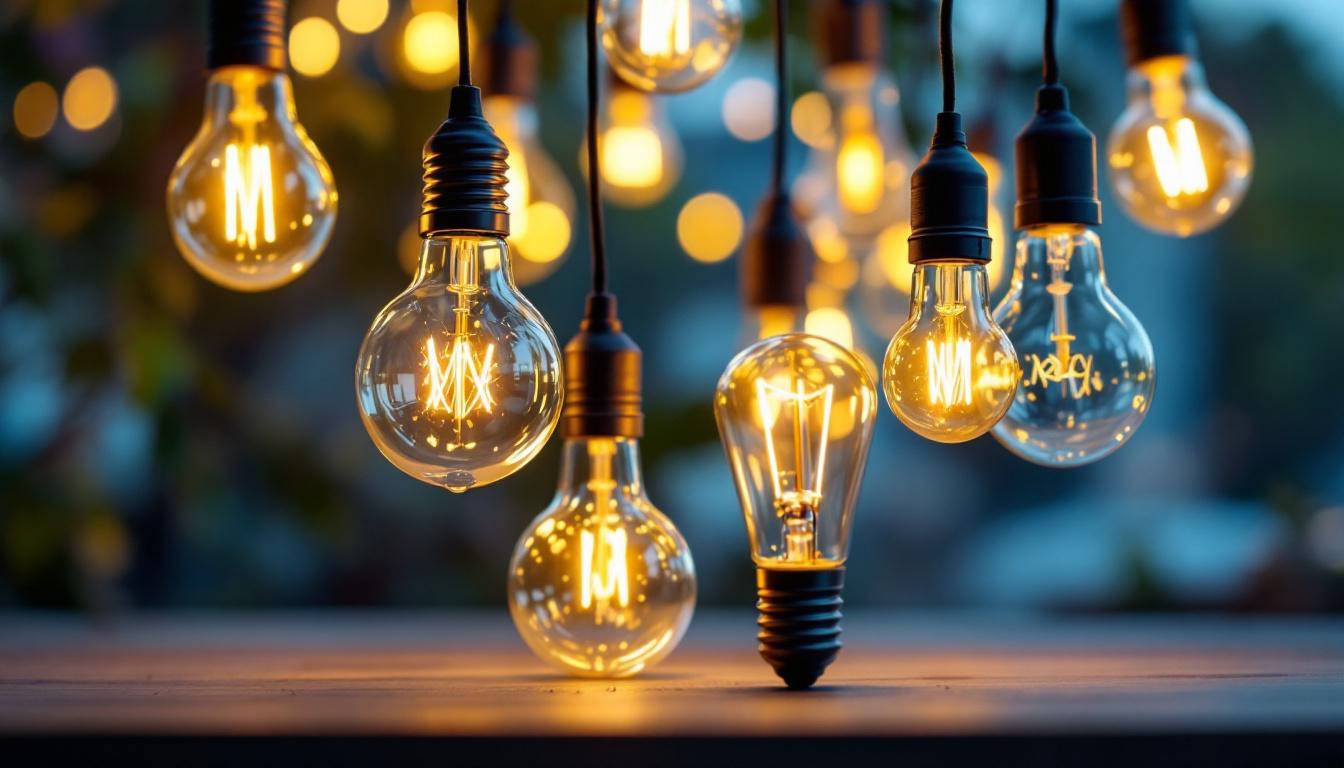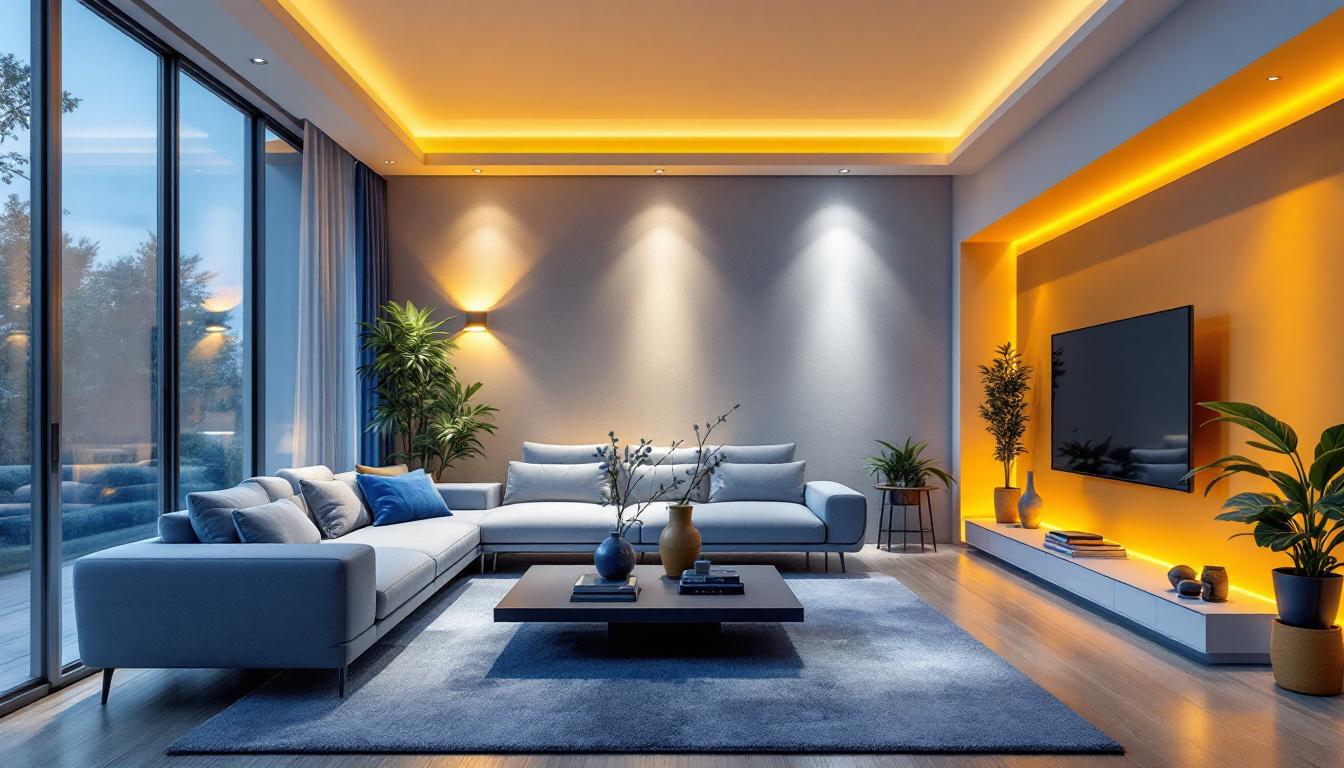
In the world of lighting design and installation, the concept of a lighting grid plays a pivotal role in achieving optimal illumination. Understanding how to effectively utilize a lighting grid can significantly enhance the quality of lighting solutions offered to clients. This article delves into the intricacies of lighting grids, exploring their benefits, applications, and best practices for lighting contractors.
A lighting grid is essentially a framework that supports lighting fixtures in a systematic arrangement. It allows for the strategic placement of lights, ensuring even distribution and minimizing shadows. The grid can be physical, such as a suspended ceiling grid, or conceptual, representing the planned layout of lighting in a space.
A well-designed lighting grid is crucial for achieving desired lighting effects. It helps in determining the placement of fixtures based on the dimensions of the space, the purpose of the lighting, and the aesthetic goals. By taking into account factors like ceiling height, room layout, and the activities taking place within the space, contractors can create a grid that maximizes efficiency and effectiveness. Moreover, a thoughtfully designed grid can enhance the mood of a room, making it feel more inviting or energizing depending on the intended use. For example, softer lighting may be favored in a cozy café, while bright, focused lights might be essential in a workspace to boost productivity.
There are several types of lighting grids, each serving different purposes. For instance, a square grid is commonly used in commercial spaces, providing uniform light distribution. In contrast, a rectangular grid may be more suitable for long hallways or narrow rooms. Understanding the different types of grids and their applications can help contractors make informed decisions when designing lighting solutions. Additionally, some grids incorporate advanced technology, such as smart lighting systems that allow for dynamic adjustments based on occupancy or time of day. This not only enhances energy efficiency but also enables users to create tailored lighting experiences that can adapt to various activities, from presentations to intimate gatherings. The integration of such technology can transform a simple lighting grid into a sophisticated system that meets the evolving needs of modern spaces.
Utilizing a lighting grid offers numerous advantages that can enhance the quality of lighting installations. These benefits extend beyond mere aesthetics, impacting functionality, energy efficiency, and overall user experience.
One of the primary benefits of a lighting grid is improved light distribution. By strategically placing fixtures within the grid, contractors can ensure that light reaches every corner of the space. This is particularly important in environments where visibility is critical, such as offices, schools, and retail spaces. A well-distributed light can reduce eye strain and create a more inviting atmosphere. Furthermore, effective light distribution can also enhance the visual appeal of products in retail settings, encouraging customer engagement and potentially increasing sales. In educational institutions, proper lighting can facilitate better learning outcomes by creating an environment that promotes focus and reduces distractions.
A lighting grid allows for greater flexibility in design. As the needs of a space change, the grid can be adjusted to accommodate new lighting requirements. This adaptability is especially beneficial in dynamic environments, such as event spaces or multipurpose rooms, where lighting needs may vary significantly from one occasion to another. For instance, a conference room may require bright, focused lighting for presentations during the day, while the same space might need softer, ambient lighting for evening gatherings. This versatility not only maximizes the utility of the space but also allows for seamless transitions between different activities, enhancing the overall user experience.
Implementing a lighting grid can lead to increased energy efficiency. By optimizing the placement of fixtures and utilizing energy-efficient lighting options, contractors can reduce energy consumption while still providing adequate illumination. This not only lowers operational costs but also aligns with sustainability goals, making it an attractive option for environmentally conscious clients. Additionally, many modern lighting grids can be integrated with smart technology, allowing for automated control systems that adjust lighting based on occupancy or natural light levels. This further enhances energy savings and contributes to a more sustainable approach to lighting design, appealing to businesses looking to reduce their carbon footprint while maintaining a comfortable and functional environment.
Designing an effective lighting grid requires careful planning and consideration of various factors. Contractors must take into account the specific needs of the space, the types of fixtures being used, and the overall design aesthetic.
The first step in designing a lighting grid is to assess the space. This involves measuring dimensions, identifying key features, and understanding the intended use of the area. For instance, a conference room may require different lighting than a retail store. By gathering this information, contractors can create a grid that meets the unique requirements of each space.
The choice of lighting fixtures is critical to the success of a lighting grid. Contractors should consider factors such as lumen output, color temperature, and beam angle when selecting fixtures. Additionally, the compatibility of fixtures with the grid layout must be evaluated to ensure optimal performance. Using a mix of ambient, task, and accent lighting can create a well-rounded lighting solution that enhances the overall design.
Advancements in technology have led to the development of software tools that can aid in designing lighting grids. These tools allow contractors to visualize the placement of fixtures within a space, simulate lighting effects, and make adjustments as needed. By leveraging these resources, contractors can streamline the design process and present clients with more accurate representations of the final outcome.
Once the design of the lighting grid is finalized, the next step is implementation. This phase involves careful installation and consideration of various factors to ensure the grid functions as intended.
During installation, it is essential to follow best practices to achieve a successful outcome. This includes ensuring that fixtures are securely mounted, wiring is properly managed, and the grid layout is adhered to. Additionally, contractors should conduct thorough testing of the lighting system to identify any issues before the project is completed.
Collaboration with other trades is often necessary during the installation phase. Electricians, architects, and interior designers may all play a role in the successful implementation of the lighting grid. Open communication and coordination can help prevent conflicts and ensure that the lighting system integrates seamlessly with other elements of the space.
Maintaining a lighting grid is crucial for ensuring its longevity and effectiveness. Regular upkeep can help prevent issues that may arise over time, such as dimming lights or uneven illumination.
Conducting regular inspections of the lighting grid can help identify potential problems before they escalate. This includes checking for burnt-out bulbs, loose fixtures, and any signs of wear and tear. By addressing these issues promptly, contractors can ensure that the lighting system continues to perform optimally.
As technology advances, upgrading fixtures within the lighting grid may become necessary. Newer lighting options may offer improved energy efficiency, better color rendering, and enhanced functionality. Contractors should stay informed about the latest developments in lighting technology to provide clients with the best possible solutions.
Examining successful implementations of lighting grids can provide valuable insights for contractors looking to enhance their own projects. These case studies highlight the diverse applications of lighting grids across various industries.
In a recent project involving a commercial office space, a lighting grid was designed to enhance productivity and employee well-being. By incorporating a combination of ambient and task lighting, the grid provided adequate illumination for workstations while also creating a welcoming atmosphere in common areas. The result was a significant improvement in employee satisfaction and overall productivity.
A lighting grid was also successfully implemented in a retail environment, focusing on accent lighting to highlight merchandise. The strategic placement of fixtures within the grid drew attention to key displays, enhancing the shopping experience for customers. This targeted approach not only increased foot traffic but also led to higher sales conversions.
As the lighting industry continues to evolve, new trends are emerging that will shape the future of lighting grids. Staying ahead of these trends is essential for contractors looking to remain competitive.
Smart lighting technology is becoming increasingly popular, allowing for greater control and customization of lighting systems. Integrating smart technology into lighting grids can enhance functionality, enabling users to adjust lighting levels, color temperatures, and even schedules through mobile applications. This trend offers exciting opportunities for contractors to provide innovative solutions to clients.
With a growing emphasis on sustainability, contractors are increasingly expected to incorporate eco-friendly practices into their lighting designs. This includes using energy-efficient fixtures, implementing daylight harvesting strategies, and considering the lifecycle of materials used in lighting grids. By prioritizing sustainability, contractors can appeal to environmentally conscious clients and contribute to a greener future.
Leveraging a lighting grid effectively can transform the way lighting solutions are designed and implemented. By understanding the fundamentals, benefits, and best practices associated with lighting grids, contractors can enhance their offerings and deliver exceptional results to clients. As the industry continues to evolve, staying informed about emerging trends and technologies will be essential for maintaining a competitive edge. Ultimately, a well-executed lighting grid not only improves aesthetics but also enhances functionality, energy efficiency, and user experience, making it a vital component of any lighting project.
Ready to elevate your lighting solutions with a grid that enhances functionality, energy efficiency, and design? At LumenWholesale, we provide contractors like you with the highest quality, spec-grade lighting products at unbeatable wholesale prices. Say goodbye to local distributor markups and hello to a vast selection of reliable lighting that meets the most rigorous industry standards. Plus, with free shipping on bulk orders, you can secure premium lighting solutions at the best value — all without hidden fees or compromises. Don’t miss out on the perfect blend of quality, affordability, and convenience. Discover wholesale lighting at the best value today and light up your next project with confidence.

Discover how a 4 foot fluorescent bulb impacts lighting contractors’ projects, offering energy efficiency, cost savings, and improved illumination—boost your expertise today!.

Discover the essential guide for lighting contractors with proven methods for utilizing Light Bulb Type A.

Discover essential insights into the various types of outdoor light bulbs with our comprehensive guide tailored for lighting contractors.

Discover how recess can lights can transform your lighting installations into profitable ventures.